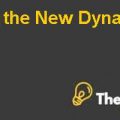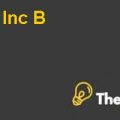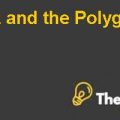
STATA TASK Case Solution
Part A
1).
The analysis of the total shoulder flexion measurement has been performed for both the treatment groups which are the physio and placebo. First of all, the bar graph has been generated in the STATA which shows the mean values of total shoulder flexion measurement for both the groups over each of the weeks. This graph is shown below:
If we look at the above graph, it can be seen that onthe sixth week, the average of total shoulder flexion measurement shows that the mean for total shoulder flexion measurement for the physio group is higher as compared to the placebo group. This trend keeps on continuing for week 12 and 18 as well. This shows that the physio treatment has a good impact on all patients. However, the patent of change is higher for the placebo group as compared to the physio group. But physio tends to have a quick effect on the patients. Next we have computed the correlations of the passage of time in weeks with the total shoulder flexion measurement for both the groups of patients and we observed that there is a higher correlation between the increasing time and the physio treatment. This correlation is at 51.87% as compared to 48.26% for the placebo group.
Finally, in order to analyze the patent of changes and variation over the period for both the groups, we observe that the average total shoulder flexion measurement keeps on increasing with each week under observation and this effect is initially higher for the physio treatment but increases for the placebo treatment with the increasing time in weeks.
2).
The summary measures of mean, standard deviation, minimum and maximum for total shoulder flexion measurement variable have been generated for each of the week for both the groups. If we analyze both the groups one by one over the 18 week period then it could be seen that the physio treatment results in higher average tsf and the lower standard deviation of the tsf with each of the increasing week. On the other hand, the minimum and the maximum values for tsf are also higher for the physio treatment as compared to the placebo treatment. The mean tsf for physio patients is 135.08, with standard deviation of 20.82 and min and max values of 82 and 170 in week 18. However, the mean tsf for placebo patients is 131.054, with standard deviation of 22.843 and min and max values of 80 and 167 in week 18.
3).
The mixed effects linear regression models have been formulated for both the groups of patient treatment. Both models are significant with a p value of 0.000. However, if we analyze the impact of time in weeks through coefficient on the tsf of the patients then again it is concluded that physio has a higher impact in terms of treatment for the frozen shoulder as compared to the placebo treatment. The coefficients are 2.08 and 1.93 respectively. These results are same as in part 2.
4).
The mixed effects linear regression models have been formulated for both the treatment groups over the 18 week period. If we compare the p values and the coefficients of both the groups at early stage, which is week 6 then it could be seen that the p value for both the treatment groups is 0.000 but the coefficient of physio group is higher at 93.86 as compared to the coefficient of the placebo group of 93.76. However, if we analyze the p values and coefficients of both the groups at a later stage at week 18 then the p values for both groups are still 0.000 and the coefficients of the physio group is again higher at 135.08 as compared to the coefficient of placebo group of 131.54. Therefore, the time trend differs between both the groups as analyzed through the summary measures also.....................
This is just a sample partial case solution. Please place the order on the website to order your own originally done case solution.












